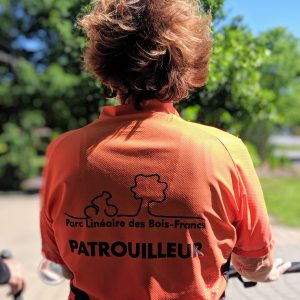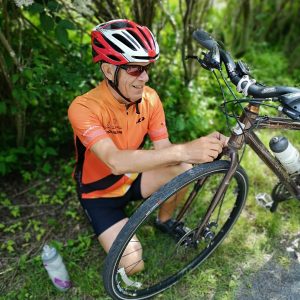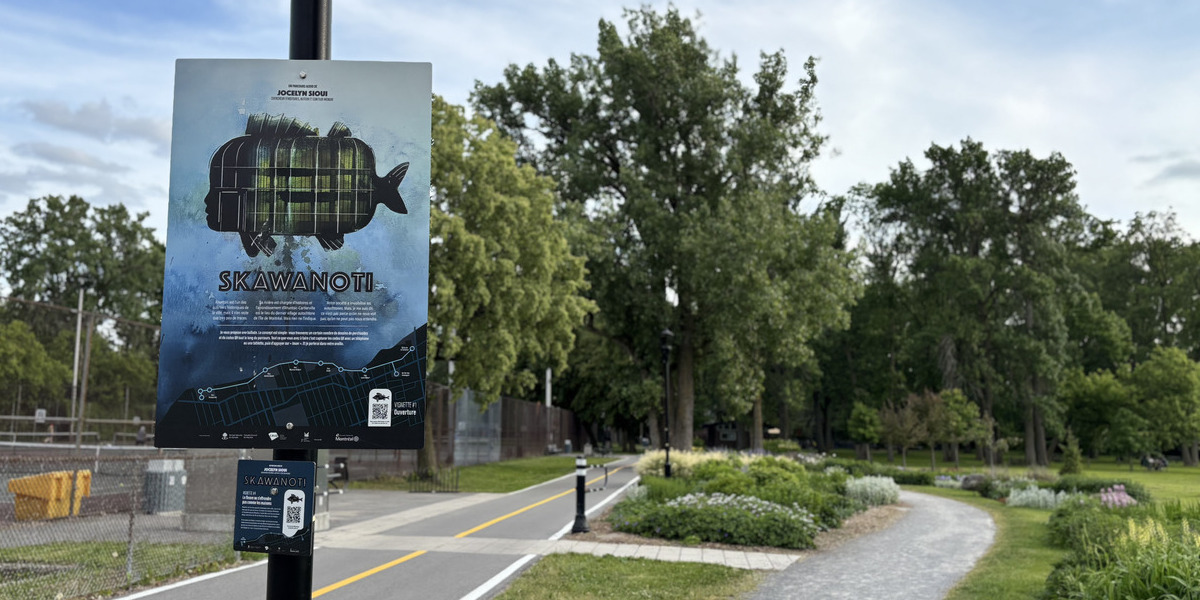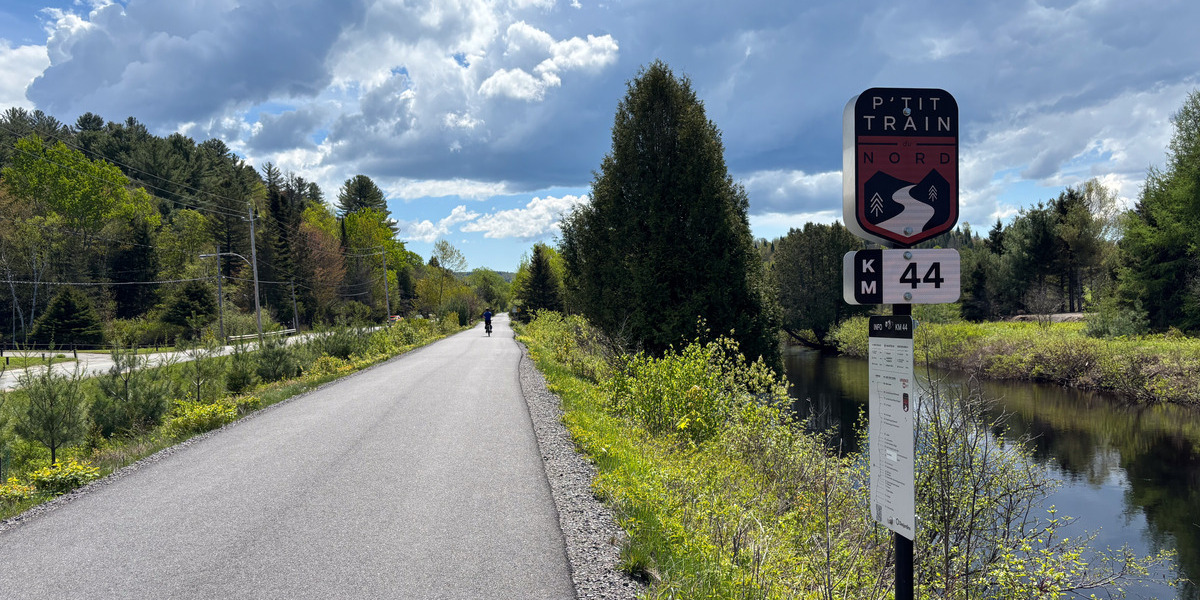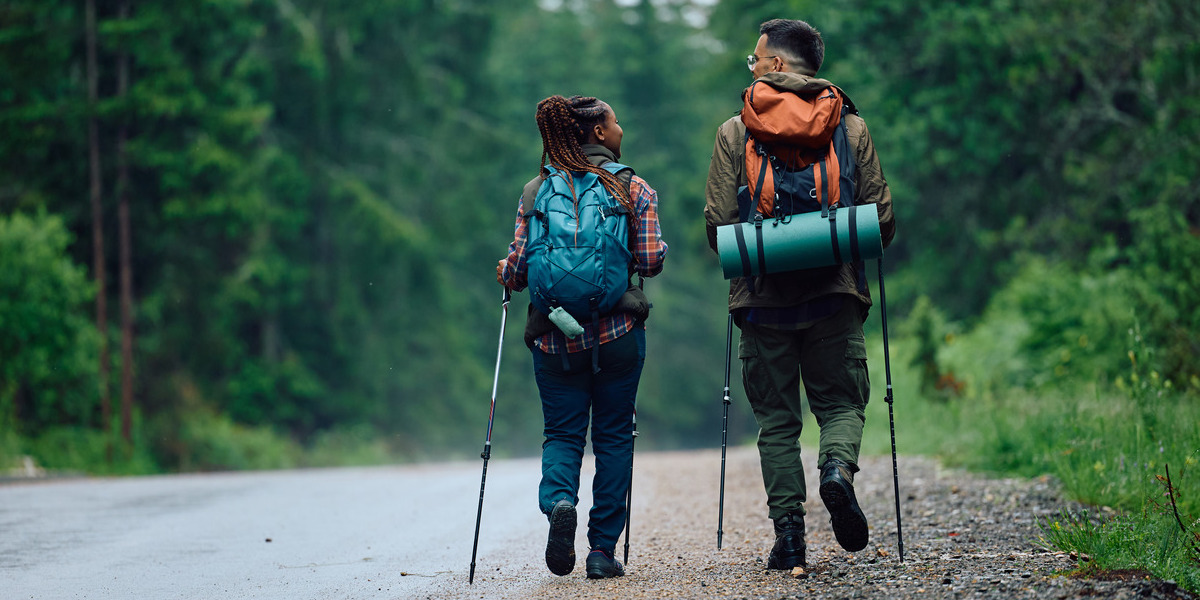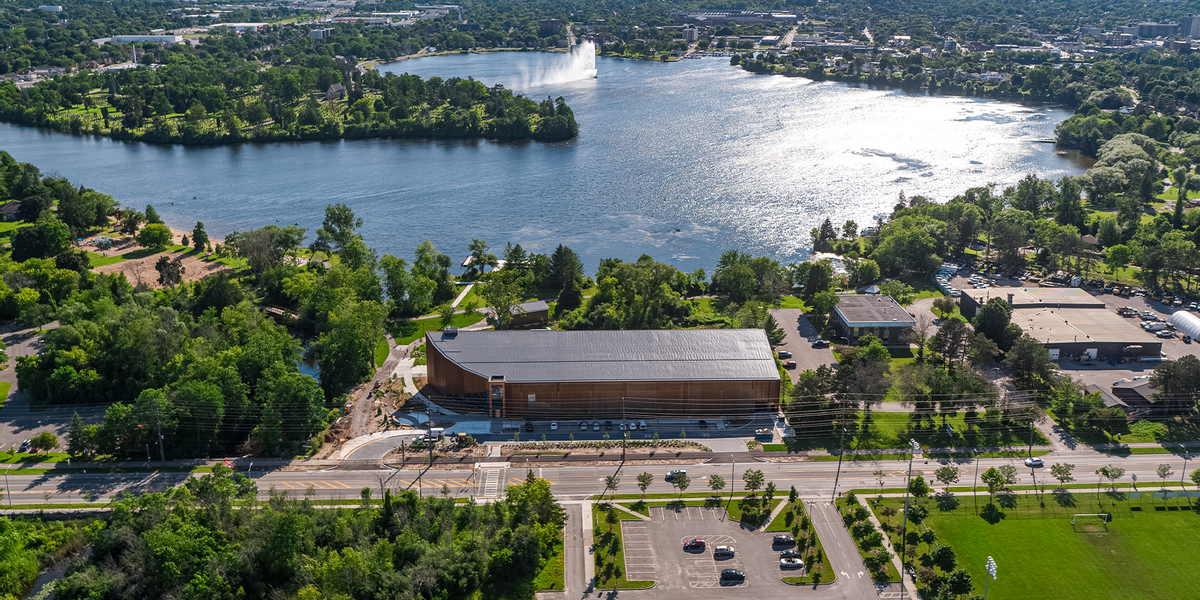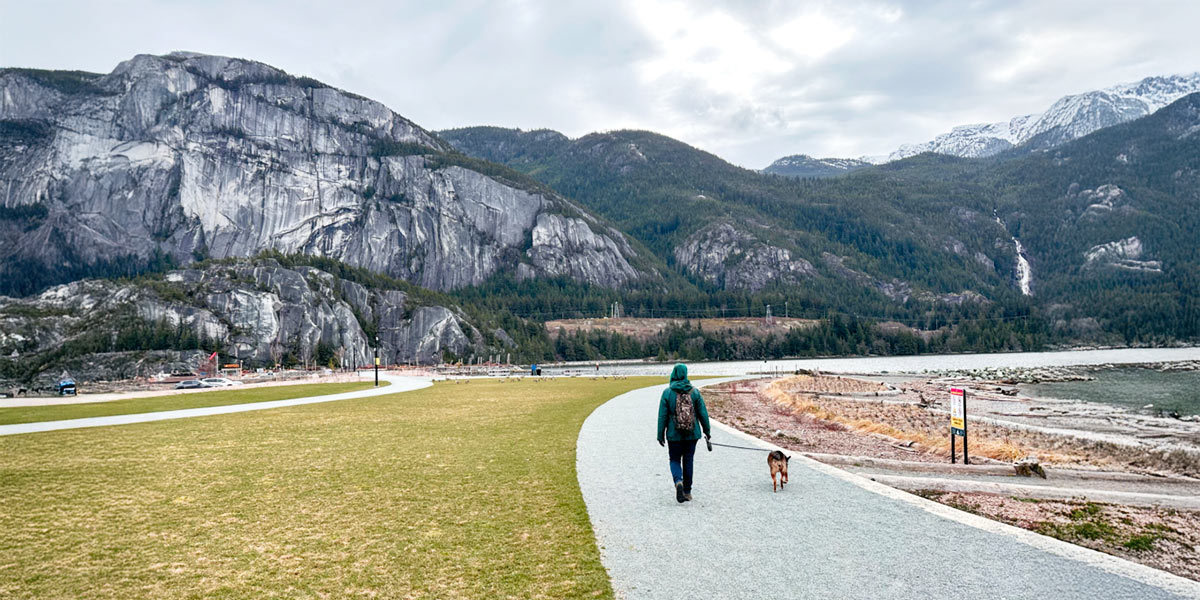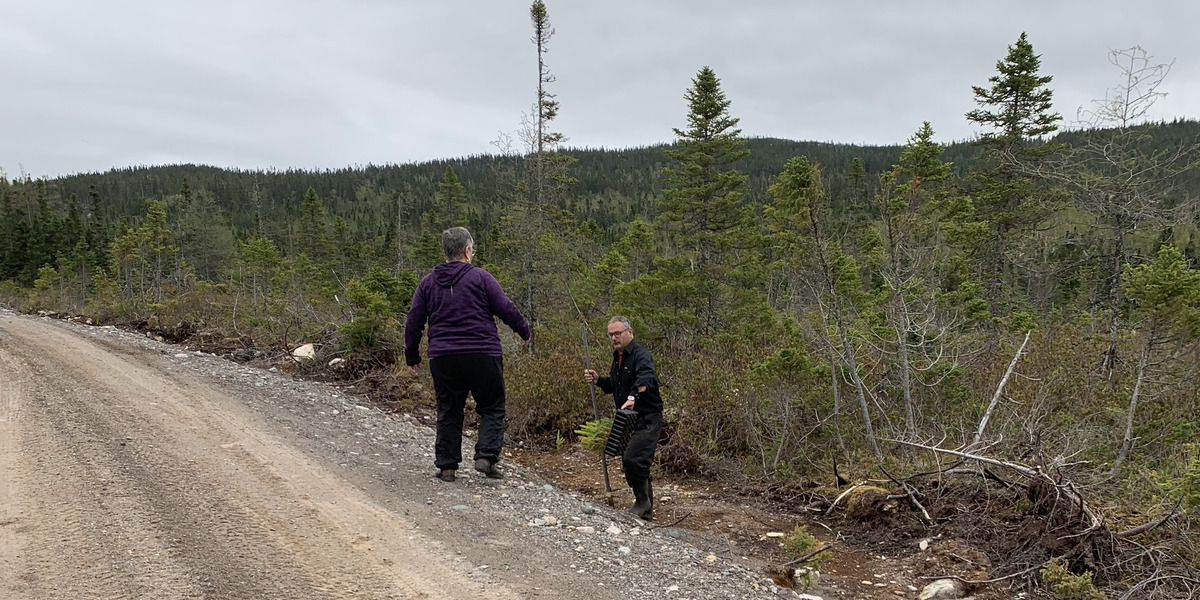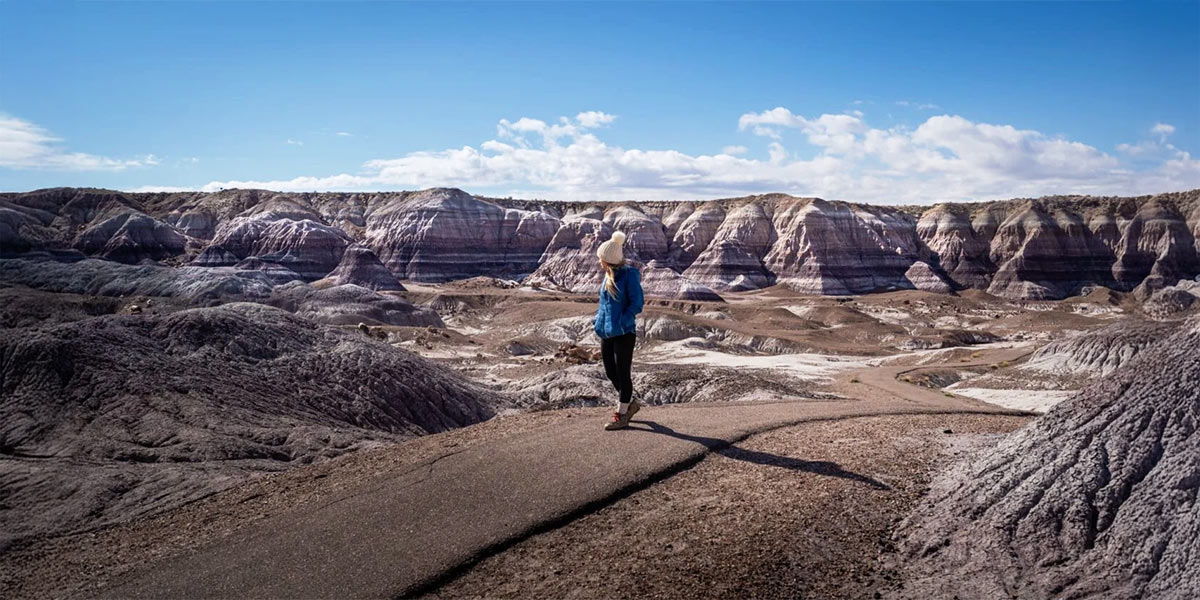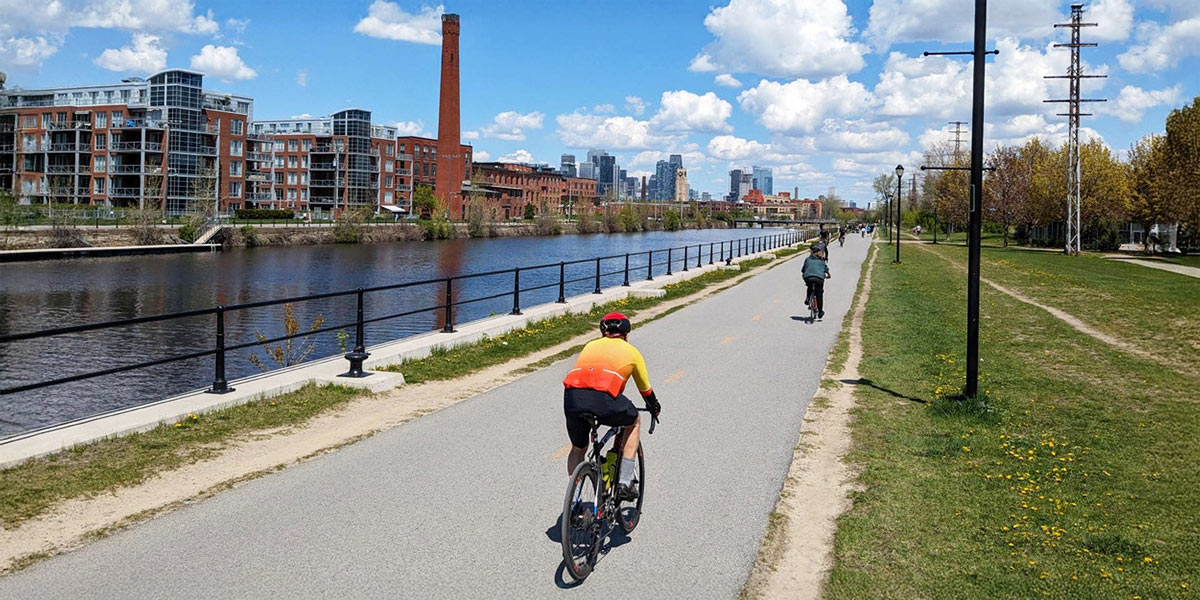The volunteers of le parc linéaire des Bois-Francs: Combining the outdoors, safety and tourism
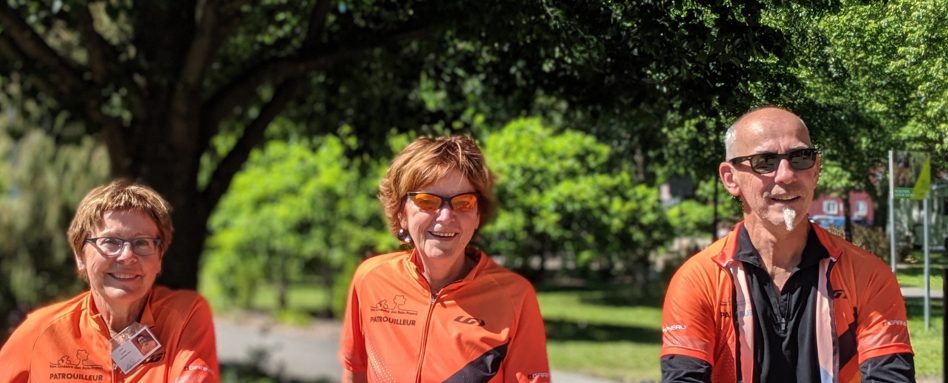
Words and photos by Stéphane Tellier
When I got to the Vélogare du Grand-Tronc to borrow one of Victoriaville’s community bicycles, I noticed a group of people all wearing bright orange shirts.
As soon as I got close enough to read the word “Patrouilleur” (patroller) on the back of their shirts, I immediately understood the group’s purpose. The custom shirt acts as a beacon for all cyclists in le parc linéaire des Bois-Francs Trail, designating its wearer as a proud patroller.
The group is comprised of volunteers who are passionate about their section of the Trans Canada Trail, the region, and cycling. I quickly realized that the patrollers provide an essential service – ensuring that our experience in the park is a positive one.
The patrollers are the park’s guardian angels, riding alone or in groups to watch over the bike path. They can patrol whichever section of the path they want. On average, they give about 10 hours of their time per month.
As the patrollers got ready to start their day, I had a chance to talk to three volunteers about what they do and their passion for their section of the Trans Canada Trail.
The birth of le parc linéaire des Bois-Francs
Le parc linéaire des Bois-Francs Trail has been part of the region’s landscape since 1997, and covers 77 kilometres between Tingwick and Lyster, just like the old railway.
Claude Sévigny is in charge of mechanical aspects of the patrol. Since he retired six years ago, Claude has been taking to the trails to welcome cycling buffs.
When the railway began to be dismantled, he thought a bike path would be a good way to foster cycling tourism. Le parc linéaire des Bois-Francs Trail did just that, becoming the point of reference for developing various bike paths in the region. As an aficionado of bicycle tourism himself, Claude was already sold on the idea of a park and especially on boosting tourism in the region, which he knew would allow the hospitality of the Bois-Francs residents to shine.
The role of the patrollers
Claude told me about the Trail section’s two bicycle repair stations, located in Laurierville and at Tingwick station. The repair stations are equipped with all the tools cyclists need for bike repairs, plus a bike pump. And all patrollers have some basic bike repair knowledge so they can fix bikes whenever possible.
The patrollers also have the important job of providing first aid to injured cyclists. Every patroller carries a cell phone so that in the event of serious injury, they can call first responders, who can get the injured person off the Trail and to safety.
“We chat with people, ask if everything is okay, if they’re looking for a place to eat. We make sure that everything goes smoothly and that all cyclists have a great experience,” he said.
After a few minutes, Claude’s spouse and his teammate came to join us. France Verville has been volunteering for the last six years and she told me enthusiastically how much she loves cycling and talking to people, which is exactly what she gets to do while volunteering.
“Patrollers are ambassadors. We’re a gold mine of information to help people discover the area’s attractions. At the start of every summer, we take a training course from the regional county municipalities of Arthabaska and L’Érable to learn about the attractions in the region,” she said.
The patrollers stop frequently at the 33 rest stops along the Trail section to meet and chat with cyclists, if they want to talk.
At the end of each ride, patrollers use a customized app to write a report. “We’re the eyes and ears of the park,” said France proudly. “If there was a breakdown or we gave information about tourist attractions, we write it down in our report at the end of our shift.”
Jacinthe Arbour, another volunteer who has been involved for 13 years, also brought up the safety aspect.
“Our job is to make sure everyone follows the rules, but we’re not the police. Simply by meeting people and talking to them about the rules, we really see the regulars being careful in their park,” she explained.
The patrollers’ vigilance plays a major role in keeping the trail in exceptional condition, but there is a maintenance team that checks the condition of the trail during the week. The team’s maintenance work is essential. For France, a big part of the trail’s beauty is how peaceful it is. “We’re not afraid of close encounters with cars or heavy vehicles. We feel safe.”
Intergenerational users
Patrollers meet a lot of people from the Centre-du-Québec region on the Trail, but they also see a lot of cycling buffs from Quebec City and the Estrie region.
“Some of the older people we meet wouldn’t get any exercise if the Trail wasn’t accessible from downtown,” said France. “Even though they’re using an electric bike, they’re making an effort to get out of the house, to enjoy their surroundings, and get their minds off things.”
“The great thing about the Trail is that there are people of all ages, all generations, who all respect each other’s pace,” she added.
The park’s general manager, Mélanie Houle, has been a true source of inspiration for the patrollers and has rallied the patrollers around an inspiring vision.
Tourism ambassadors on two wheels
“The tourism aspect is huge,” Jacinthe adds. “In July and August, bicycle tourism is extremely popular for families, even with Europeans. I like to tell them about the two- and three-day packages the hotels and B&Bs offer to promote the Trail section. People aren’t always aware of these things, and I think it’s a great way to get them to come back.”
Then I asked her about her favourite moments when she’s patrolling the trail. “I love going out by myself with my plant book and taking the time to admire the plants, to learn more about the ones along the trail, and also to admire the birds that live in the park. I really love being able to go at my own pace, and when there’s an opportunity to talk to visitors, those are my favourite times.”
It’s easy to see that contributing to this Trail section’s success is extremely motivating for volunteers. “The best payment you could give us is to tell your friends and family, your co-workers—everyone—about us and the Trail,” said France.
Thanks to the generous contributions of donors from across Canada, Trans Canada Trail and its local partners work tirelessly to ensure the Trans Canada Trail remains a legacy that we can all take pride in. If you value our work, support us today by visiting our Give page.


